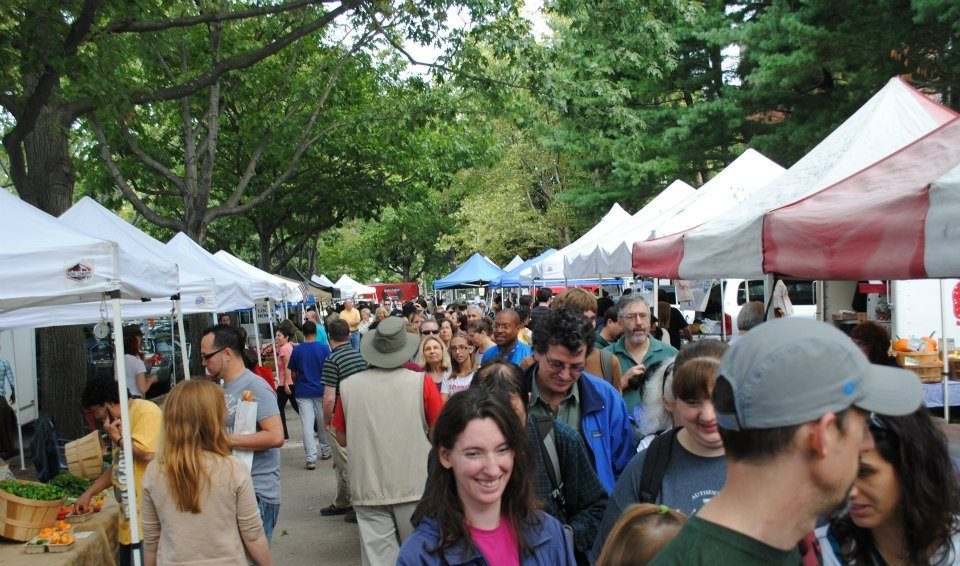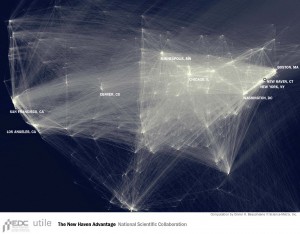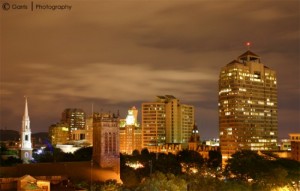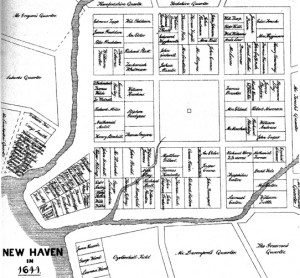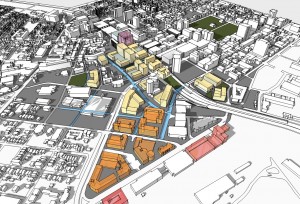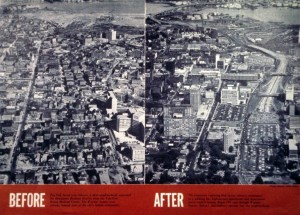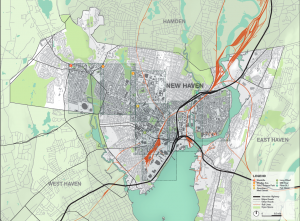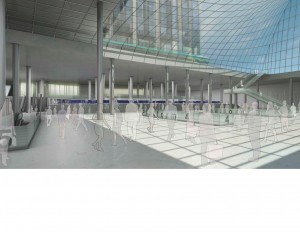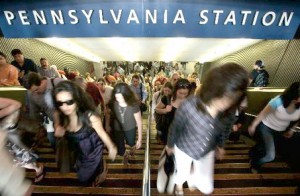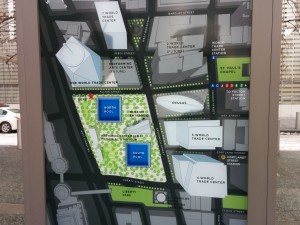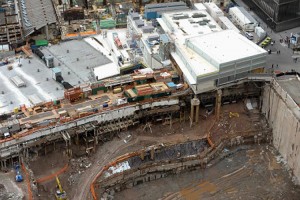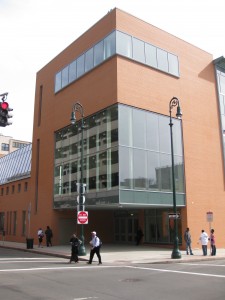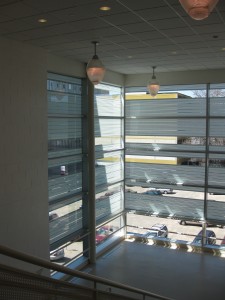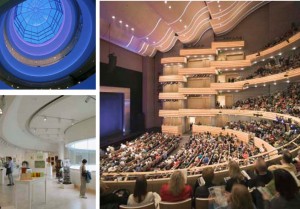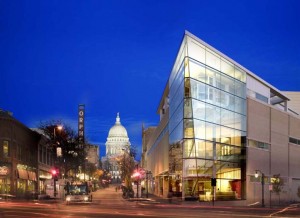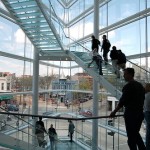The following sequence of projects represent my background in terms of design/planning and academic work and the observation themes that resulted from that work. This thinking work also led directly to implementation projects or specific proposals, which are found on the ‘making’ page.
Connected Development: Forming a Progressive Urban Economic Development Strategy
2013: MIT Thesis as Sloan Fellow for Global Leadership and Innovation
Cities have always been a hub of innovation activity. However, in the age of ‘choice’ and availability of inexpensive transportation and communication, there is much untapped economic opportunity in a new landscape of hyper-connected places. The workforce’s easy mobility and multi-locational existence, is resulting in the transformation of the ‘workplace.’ Gateway cities could continue to build their economies by increasing the flow in and between global ties, and secondary markets to which they are most connected, as well as networking those secondary markets more effectively to each other. The economic geography of innovation—the way these actors come and work together—has been transforming, and redefining the activities that stretch beyond traditional governing frameworks, and recognized regional clusters. Therefore, economic development policy should take a macro approach that unimpeded flow would facilitate faster, more sustained growth overall.
The challenge that these markets face is their scale. They are generally too small to function as established industry-cluster models or are reliant on singular industries, they must compete regionally for scarce state and federal dollars, they create redundant governance structures, and they lack expertise or sustainable funding, which can lead to ‘recreating the wheel’ and wasted efforts and funding. However, that same intimate scale allows for quick engagement of the many actors in an innovation economy, and these cities enjoy a level of social networking, knowledge spillover and innovation ignition (and lower costs!), which is unparalleled.
NETWORKS CREATE SCALE: (link to TDI)
EDC Strategic Plan–The Organizational Start Up
2010-12: Economic Development Corporation (EDC), CEO
As lead strategist for the four-year old public-private partnership between City of New Haven and Yale University whose mission is focused on business retention, growth, redevelopment and planning, the role was primarily stewarding the $1.6m annual operating budget of the organization.
In order to consider maximum impact based on limited operational dollars, and nearly financing capacity, with the endowed grant for the first five years of operation draining, I developed the organization’s first Strategic Plan for sustainable and diversified funding that would both support the core mission activities as well as implement new programming and initiate new financial tools that would support the business mission of small business development, business growth, and real estate planning and development, The plan was adopted by the organization in January 2012.
From 2008-12, EDC assisted businesses secured in excess of 19.2 million in financing, resulting in approximately 1350 jobs created or maintained in New Haven (City Annual Budget is 40 Million, approximately 75,000 jobs in city). To support the primary goal of business retention and growth, in 2011 EDC initiated approximately 250 business visits, 20 hosted events, representing 519 attendees or 181 companies. The organization initiated new policy conversations and advanced legislation at the state level (brownfields and multi-tax TIF financing), promoted and made visible the innovation eco-system (LINK) to advance new state policies, supported the growth and operations of business improvement districts, advanced two planning initiatives (below) to secure and support long-term economic development in the city.
STRATEGY IS EXECUTED THROUGH ORGANIZATIONAL DESIGN (link to organizational development)
EDC Medical District to Downtown
This 10 year district transit oriented development (TOD) and governance plan for an 80-acre under-utilized land adjacent to booming medical district and major transit hubof New Haven’s Union Station (10th busiest commuter train station in the country). The future development imagined a sensitively-integrated urban fabric to existing neighborhoods and the downtown that would bring an additional 3.5 million square feet of mixed use construction online, as well as 7,000 permanent jobs, and 1B in net new property taxes annually.
EDC was the lead convener of the City , Yale New Haven Hospital, private land owners/developers, and Yale University to advance the future of this critical growth area for the City. As a national research and development leader, Yale was 14th in the country (2010) for US NIH funding, and represented about 80% of the State of Connecticut’s total economic output from biomedical research and development.
The planning effort included forming new legislation & development of new finance tools (multi-tax TIF) for implementing major infrastructure project, in addition to considering roadway re-alignment, improved development parcel infrastructure, and new zoning for increased mixed-use density.
MAPS RENDER VISIBLE IMPORTANT COMMUNITIES (link to innovation/9th square)
EDC Mill River
A public-private partnership between the City and the EDC, and area businesses to create an economically viable and sustainable district development plan for jobs-rich light industrial área of New Haven which is adjacent to the waterfront, major transportation/transit, and residential districts. This area represented a crucial component of the City’s diverse job base in a very visible area but still suffered from a lack of public and private investment, aging infrastructure, blighted properties, and an increasing number of uses that would push out industrial over time. The area was a 1860’s and 1960’s light industrial district which had blighted areas and was underutilized given its proximity to transit, transportation and residential districts. This area was home to flourishing precision manufacturing, food manufacturing and home-improvement businesses was already incubating new companies attracted by the compact and accessibility, low rents, and scale of facilities available.
The plan included site analysis for better utilization of land, new unique housing typologies, business expansión strategies, and creation of new mixed-use TOD zoning that integrated and preserved light industrial activities and unique live/work spaces in areas marginal for industrial use, and supportive of connections to the existing neighborhoods.
One of the outcomes that grew out of the public engagement process was an enhanced sense of community, and a higher visibility of the makers and entrepreneurs in the district, and an enhanced recognition of the area’s assets including the Mill River for recreation and connectivity to neighborhoods. In combination with increased linkages for workforce and jobs, the plan activity spawned a reclaiming of the Mill River (LINK) and a makerspace, Make Haven, (LINK), as well as a federal grant to improve Farhnam Gardens affordable housing, increased real estate market activity, new business starts, and business expansion.
CHAMPIONS EMERGE IN DISTRIBUTED LEADERSHIP (link to MakeHaven)
Penn Station NYC
2008-10: City of New York Mayor’s Office, Office of Capital Project Development, Director of Design
Coordinated planning efforts between the City of New York, Related Companies, Vornado, Empire State Development Corporation, and the railroad companies (MTA, LIRR, NJ Transit, Amtrak) to address potential design options for the renovated/new facility over three distinct variations. Projects included the original Farley Building plan (SOM/HOK 1996-2006), and the potential relocation of Madison Square Garden to Farley and construction of new Penn Station and commercial development (SOM/HOK/Shop, 2007-8), and the independent City-led option for a scaled-back option to keep the project alive. Through all versions, I led multi-sub consultant team and review panel of transportation agencies for counter proposals that involved renovation, construction implementation, and new facility program and design.
After significant political and economic turbulence of 2008-9, the City initiated a modular renovation plan to address the political/fiscal context of 2008-9, once Madison Square Garden decided not to move, assuming that Amtrak would move to the Farley building (not finalized at the time of design). Emerging from the sunken station on the 8th avenue, and mid-block accessway, would be two new glassy and visible primary arrival halls to better orient passengers. The study included both improvements to the passenger railroad station, station operations, and related increased commercial development for improved passenger amenities.
ALIGNMENTS HAPPEN AT ITERATIVE POINTS (link to schedule of Penn Station Project)
World Trade Center-Performing Arts Center
2007-10: City of New York Mayor’s Office, Office of Capital Project Development, Director of Design
Implemented revised planning and programming study with various arts tenants for new landmark arts facility at memorial site, including all required security performance criteria, in order to design and integrate engineering requirements into early foundation packages under construction at PATH rail terminal. The Performing Arts Center will be the last building developed at the site, but its future fate determined by effectiveness of coordination with the early site improvements. The City wanted to preserve the opportunity to build the cultural facility in order to maintain a diversity of uses in this new neighborhood. The effort required aligning interests among the City Departments (Department of Cultural Affairs, City Planning) as well as a variety of arts groups such as the Joyce Theater, who had been designated the facility anchor, with various departments and agencies of Port Authority of New York and New Jersey, MTA, and Empire State and Lower Manhattan Development Corporation. The work entailed multiple consulting teams from various in-process projects as well as creating a constituency of stakeholders to create a visible presence for the future program that had no official organization and only minor funding in place.
CONSTITUENCY IS REQUIRED TO SHAPE VISION TO REALITY (link to WTC Project)
Cooperative High School
2002-6 Pelli Clarke Pelli Associates, Senior Associate & Design Team Leader
Designed and facilitated new landmark facility for 1.5B School Construction Program. This 650-student comprehensive inter-district magnet high school with visual and performing arts focus in downtown New Haven. The building includes a 350 seat multi-purpose theater (with full fly loft), a black box, related arts rehearsal spaces for music, dance, drama, and an exhibit gallery as well as typical high school curricular and amenity facilities (Gym, Cafeteria etc.
In addition to the full design services, and after an early controversial site selection we initiated and led a significant revised public site selection process studying more than 35 sites with more than 50 criteria. Working with various stakeholders (City, School, downtown businesses, Yale Arts, and Yale University), we reviewed and studied the best match between program and location–culminating in a public presentation of a comprehensive matrix (40’x8′) to present the findings. The site map became the basis for most economic development analysis for the following years of tremendous urban growth.
In order to facilitate programming, and future integration into the downtown, I led early efforts to build partnerships with related arts and Yale institutions, creating sustainable links to jobs and training for students. These early partnerships have now fully immersed the school facility as a core piece of economic infrastructure in the city. Its public access facilities as well as classrooms are used by neighboring arts groups, businesses, and students from all the other schools who have facilities near (Yale) and far (Quinnipiac University, Southern Connecticut State University).
PARTNERSHIPS LAY FOUNDATIONS (link to arts organizations/information)
Overture Center
2002-6 Pelli Clarke Pelli Associates, Senior Associate & Design Team Leader
Lead facilitator of the programming, design and construction of a unique, single-donor, world-class performing and visual arts facility comprised of 2-phase development to house multiple resident arts companies, and public events. The project was located on a full city block in downtown Madison, Wisconsin, along the primary pedestrian corridor between the State Capital and the University of Wisconsin. Although privately developed, the project was intended to be gifted to the City, creating a broader public dialogue throughout the design process.
The project included new construction of 2200 seat multi-purpose theater, public event spaces, rehearsal spaces and Art Museum, as well as renovation of historic 1000 seat, and 350-seat theaters and building facades. The project provided new and improved spaces for 8 resident performance companies and museum.
Worked closely with donors, city, developers, and construction teams to analyze construction and maintenance costs, helped partner with various city organizations for new systems of construction waste & materials re-use, and adjacent development activities.
The City of Madison was an inspiring setting, and given the intimate relationship between the design team and the donors, the team spent much time in Madison, and the enhanced relationships with the community brought many relevant stakeholders into the building of the facility–as supporters, vendors, future users and design touches. The area where the development was happening was already a hub of community, and community memory, and both events and facilities were considered integrated into the life of the place.
PLACE MATTERS: INSPIRES COMMUNITY (link to CitySeed)
